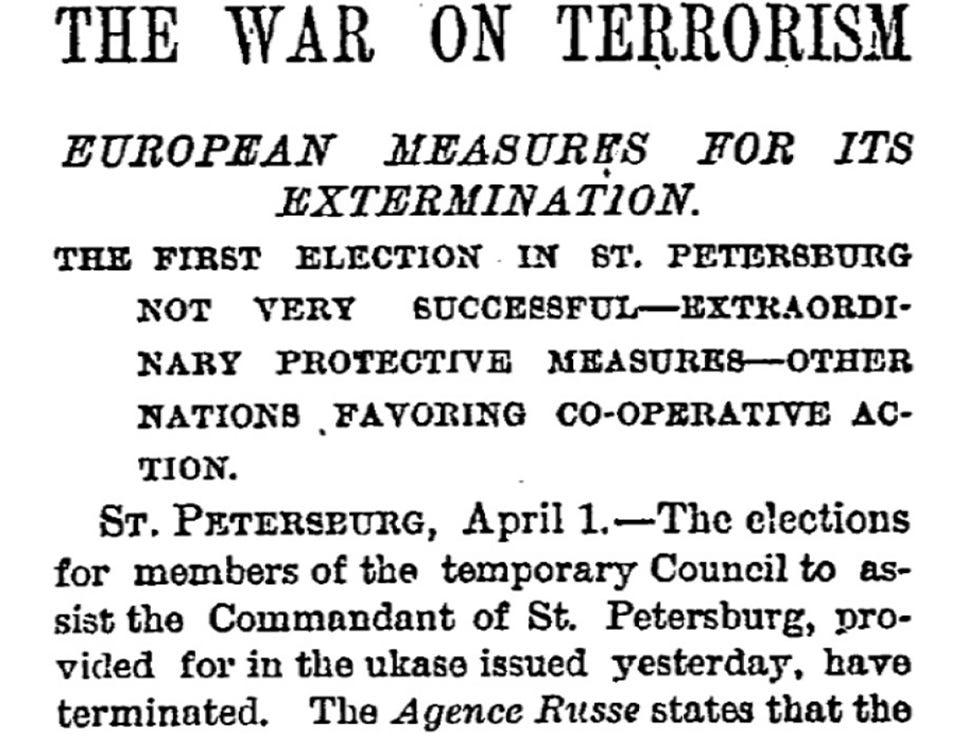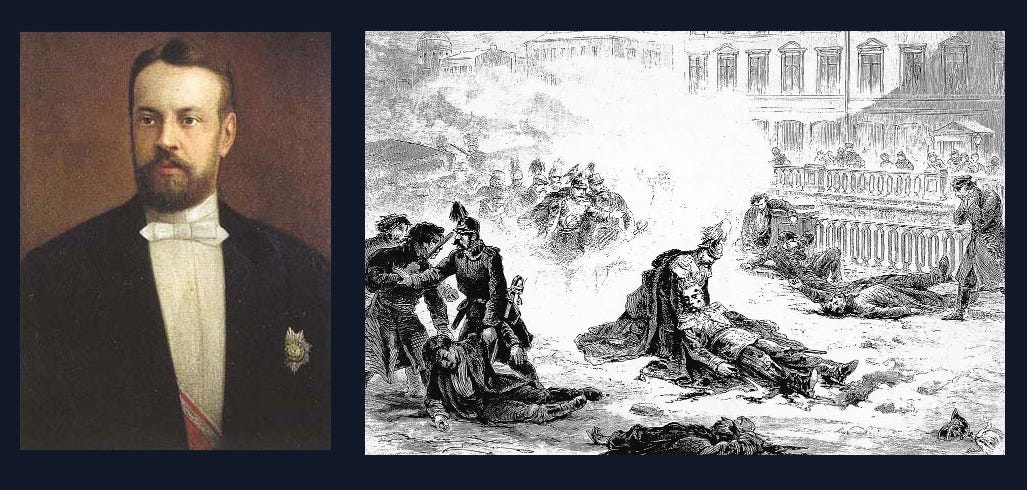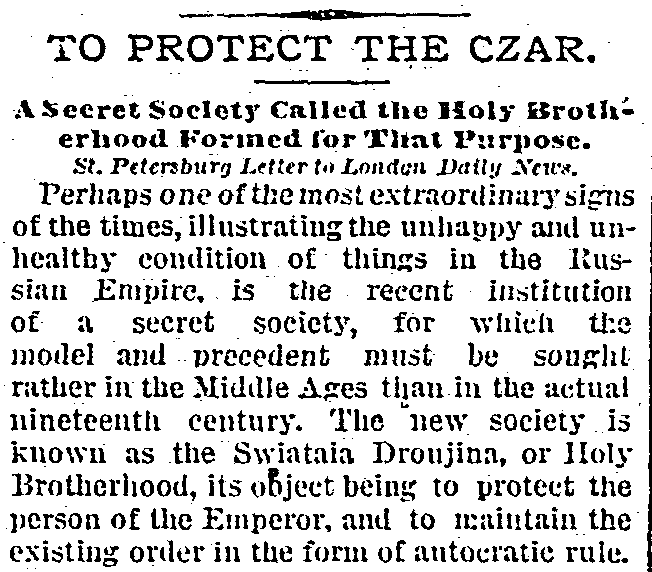Fighting terrorism is difficult. Just ask George W. Bush.
The methods of counter-terrorism available to governments, their police and security services are diverse. Preventative interventions, surveillance, active measures designed to deter, the infiltration of terrorist groups and the running of deradicalization programmes have historically been, and still are being, used across the world to reign in the spread of political violence.
Amongst the most controversial counter-terrorism methods is the one that seems simplest – to fight terror with terror. If someone bombs your city, you bomb their home. If they warn of violence to come, then you launch a pre-emptive strike. The premise is simple. Take the terrorist’s greatest weapon – fear – and turn it against them.
This doctrine underpinned the creation of one of history’s more tragicomic counter-terrorist organisations, the Holy Brotherhood.
This group was born of the fear and paranoia unleashed by the most spectacular terrorist attack of the 19th century. On 13 March 1881 in St Petersburg, two members of the Russian nihilist group Narodnaya Volya (People’s Will) rushed at the horse-drawn carriage of Tsar Alexander II with dynamite-charged improvised explosive devices (IEDs) in hand. The first bomber threw his IED at the carriage. The explosion startled the horses, injured some Cossack guards but it failed to end the life of the emperor whom Narodnaya Volya had attempted to kill on no less than a dozen occasions since 1879, blowing up his train, yacht and even smuggling a time bomb into the Winter Palace. The second bomber was luckier (if you can call it that) than his comrade. Realising he would have to succeed in his mission or die trying, Ignacy Hryniewiecki rushed through the confusion and smoke towards the tsar clutching his IED to his chest. The resulting detonation killed Hryniewiecki, killed Alexander II and, quite possibly, etched into the history books the world’s first suicide bombing, which is typically thought of as a more modern phenomenon.
Speaking of modern, it is no understatement to say that the assassination of Alexander II was the 9/11 of its day. If you don’t believe me, this is a headline from the New York Times published days after the tsar’s murder, referring to Europe now having to wage a “War on Terrorism” - sorry George W., you were 120 years too late.
As the world’s press frothed in outrage at the explosive demise of a god-ordained emperor, a group of Russian reactionaries met to discuss how to strike back at Narodnaya Volya. One of these reactionaries was the future Prime Minister of Russia, Sergei Witte, who in May 1881 proposed to a dozen or so nobles, priests and generals that they form a ‘secret organization, which would make it its business to answer each terroristic letter with a counter-blow of a similar nature’.
The result was the formation of an esoteric, quasi-masonic, anti-Semitic and arch conservative group called the Holy Brotherhood, whose aim was to replicate ‘the sanguinary traditions established by the terrorists’. This meant a campaign of targeted killings and propaganda against Narodnaya Volya, carried out in secret by an underground network of patriotic agents, who would be funded from the weighty purses of the Holy Brotherhood’s elite membership.
In terms of image, the Holy Brotherhood meant business.
This was the late 19th century – a golden age for secret societies. Everyone from the Irish Republican Clan na Gael to the Ku Klux Klan to the occult Hermetic Order of the Golden Dawn were active in this era, constructing clandestine worlds of passwords, secret handshakes and initiation rites. The Holy Brotherhood looked to surpass its contemporaries in all the above.
Initiates (none of whom could be Poles or Jews) were brought before a five-man Council of Elders and made to pledge allegiance to God and their new Tsar Alexander III. They were then taught the secret handshake by which to recognise other “brothers”, issued a number that would act as their codename and presented with a medallion depicting the medieval Russian hero Alexander Nevsky - a cult figure in Russia to this day. Finally, the freshly minted brother was given a keyword that would designate what strata of the organisation they belonged to. In contemporary parlance these keywords – Talmud, Success, Genesis were some of them – indicated each member’s “cell”. During their initiation each brother was issued a set of ciphers for communicating with their cell controller. To maintain secrecy and maximise operational efficiency, brothers were forbidden from communicating with other cells.
Remember that.
Once the medallion was pocketed and the codewords memorised, the brother would learn what activities their cell partook of. Some cells ran surveillance on Narodnaya Volya members. Others infiltrated the terrorist group to gather intelligence on their plans for further attacks. There was even a cell whose brothers were essentially thugs tasked with beating up liberal students, café-dwelling book-readers, Jews, Poles and anyone else deemed a threat to Alexander III’s reactionary state. Other cells – like the one Witte controlled – handled targeted killings.
This led to Witte and two gunmen being despatched to Paris in the summer of 1881 to assassinate Lev Hartman, one of the plotters involved in the bombing of the tsar’s carriage who was in the process of fleeing the continent for the United States. Witte expected to arrive at Hartman’s location and watch his boys gun the fugitive terrorist down. Instead, confusion reigned when Witte’s team were interrupted by a brother (who, presumably, gave them the secret handshake) carrying a message from another cell controller saying the assassination was off. It turned out that a Russian diplomat in Paris – who had only recently joined the Holy Brotherhood on the advice of his father – had decided he didn’t want blood shed on French soil. To Witte’s chagrin, Hartman escaped across the Atlantic.
This botched plot exemplified how, for all its secret pomp and patriotic intensity, the Holy Brotherhood was more an elite club than a counter-terrorist riposte to Narodnaya Volya. As early as spring 1881, some of the Elders forgot their pledge to secrecy after one too many vodkas and told friends and family of the fun new clandestine order they had formed. This led to what Witte later described as ‘all manner of riff-raff and ambitious climbers’ joining the Brotherhood. So bad was operational security, news of this secret organisation and its rituals made it into the Chicago Tribune! The end came soon after that, chiefly at the hands of the new tsar’s real secret police, the Okhrana, the government minister of which wrote off the Holy Brotherhood as a ‘colony of young thugs’ whom the regular police had to ‘fight against it just as much as against the terrorists!’ And so it proved. Narodnaya Volya was not defeated by initiation ceremonies and esoteric patriotism, but by a combination of waning support for its cause after the tsar’s demise and the cunning infiltration of the group by an Okhrana agent - an operation you can read more about in this book.
The Holy Brotherhood was a shoddy manifestation of elitist paranoia, societal panic and the misplaced confidence of vigilantes. That said, its history gives us an insight into a nascent form of crude counter-terrorism, that even 140 years ago was ill-fit for the purpose of stopping violent radicals. The final proof of the Holy Brotherhood’s impotence came in 1905 when a new terrorist group – the ultra right-wing Black Hundreds – put a bomb in Sergei Witte’s house.
History and irony. They work well together.
The content in this post is drawn from by 2023 book, The Rise of Devils: Fear and the Origins of Modern Terrorism




